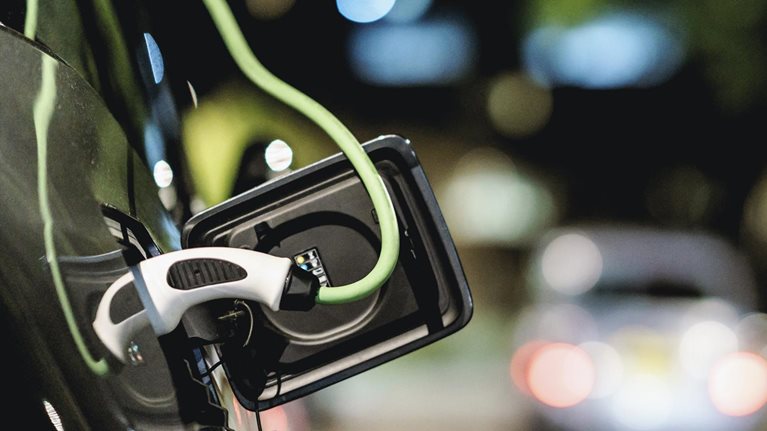Electric vehicles (EVs) are making up an increasing share of sales in key markets around the world and becoming ever more central to automakers’ business models. With this shift, both incumbent OEMs and new EV players are searching for profitable EV business models and a sustained competitive advantage, since mass-market EV profitability is still a challenge.
Our analysis of 16 current EV models reveals that, despite growing sales, EV profitability is at best only slightly above breakeven for many automakers across models and price segments (exhibit). Yet the accelerating pace of change in the EV market is also giving OEMs a unique opportunity to redefine their automotive business models and elevate profitability significantly toward targeted margins. Our report, Electrifying the bottom line: How OEMs can boost EV profitability, contains an outside-in diagnosis of current profit levels of EVs and a forward-looking full potential analysis; it includes a discussion of expected countereffects and profitability risks.

Would you like to learn more about the McKinsey Center for Future Mobility?
Many OEMs are going to great lengths to bring EVs to the market to meet new CO2 targets and avoid significant financial and nonfinancial penalties. Despite the strong momentum behind design and production, however, many automakers are still defining their path toward reaching targeted profitability for their EV business. Our report supports OEMs in improving their EV business strategies by answering some key questions that are currently on the minds of most OEM executives:
- What is the current profitability for typical EVs across different vehicle segments, and how will the profitability of EVs develop until 2030 under a business-as-usual scenario?
- What are additional countereffects and profitability risks that endanger economically viable business cases with EVs?
- Which incremental cost levers can automakers pull, and which more radical strategic moves can they make to boost their EV profitability?
- How can automakers select and implement these measures and ensure that they fit their capabilities and strategic context?
To answer these questions, we engaged in a course of research that assesses EV profitability from two distinct vantage points: benchmarking and bottom-up modeling (see sidebar, “About the report”). We conducted a forward-looking profitability assessment for the years 2021 through 2030, including a business-as-usual scenario and a discussion of additional potential countereffects and profitability risks (such as raw-material price surges and supply-chain imbalances). We also examined the theoretical maximum profit potential per vehicle over two time horizons, looking at the potential impact of incremental levers and radical moves.

Why the automotive future is electric
We distilled six key insights from our research on EV profitability:
- While market penetration is up, profitability remains low for current EV models. Although the penetration of EVs in key markets is on the rise, profitability currently remains low or at best slightly above breakeven. Twelve out of the 16 analyzed EVs show negative profit margins.
- In a business-as-usual scenario, profit levels will gradually improve. Going forward, increased competition and expiring subsidies are likely to put price pressure on EVs. Nevertheless, EV profitability is expected to rise, given cost reductions and economies of scale. Continuing the business-as-usual scenario, profit margins could reach 4 to 11 percent by 2030 depending on the vehicle segment.
- Additional countereffects and risks could lower or cannibalize the entire EV profit margin. What if lithium and nickel prices soar in light of long lead times for mining capacity expansions? What if battery supply shortages increase the cell prices beyond “cost plus” levels? We see four major countereffect/risk categories that will vary by OEM and could have an estimated impact of ten to 15 percentage points: raw-material price increases, supply-chain decarbonization, supply-chain imbalances, and additional content for electrical and electric components and software.
- Incremental cost and revenue levers have the potential to mitigate the above-mentioned risks (at least partially). Incremental measures, such as adopting industry best practices in design-to-value (DTV)/direct-to-consumer (DTC) sales, R&D efficiency, capital-expenditure optimization, sales and after-sales network optimization, can help automakers to potentially improve the profit margins by an additional six to seven percentage points in 2030 for selected vehicles.
- More radical moves could enable healthy profit levels. To increase EV profitability further, automakers can take a bolder approach by making radical moves to their EV business models. These moves could involve a design-to-use case approach, the creation of zero variants, DTC sales, the pursuit of a full range of monetization opportunities over a vehicle’s life cycle, and EV/battery-as-a-service offerings. Our full potential analysis for radical levers shows an additional incremental profit potential of five to 12 percentage points in 2030.
- Some improvement measures are OEM-agnostic, while others consider organizational maturity and vehicle segment. All the incremental moves are rooted in industry best practices and are available and appropriate for consideration by all OEMs. The impact of more radical moves will vary based on both the vehicle segment and nature of the OEM business (newcomer versus incumbent).
The full report is available upon request from MCFM@mckinsey.com.


